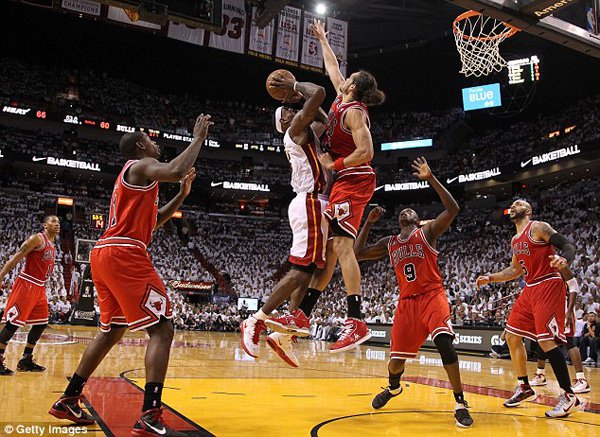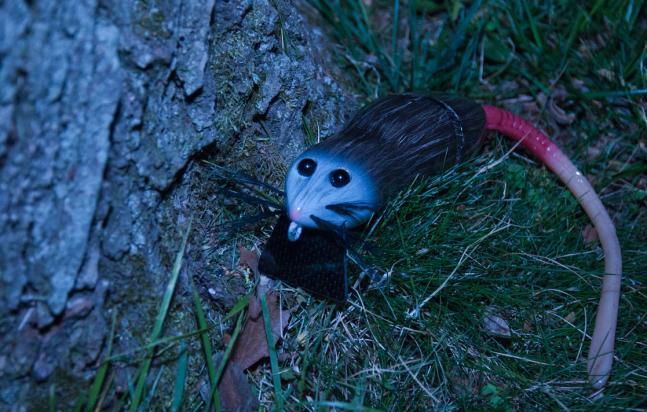Summer Rat Fishing on Lake Guntersville - a primer on late summer fishing
Late Summer Tips for Fishing Lake Guntersville while 揜at Fishing?br />
With the water temperature in the high 80抯 and low 90抯 I thought I would expand my late summer thoughts on productive rat fishing on Lake Guntersville. As I have stated in the past the late summer brings on the rat time of year. I wanted to expand on what to look for to find productive areas that should help catch fish on a rat. As the evenings start to show a few signs of the cooling north winds you will find that the grass will start to turn brown, then pull away a little from the roots. The wind will move clumps of grass, create holes and start a foaming on the top as the grass gives way, or dies to the change in temperature. This change is exactly what turns on the rat bite. It is this exact grass pattern that you need to look for to catch those late summer bass on a rat. That nasty foaming area of grass is what to look for, coupled with some holes created by the wind moving the grass is creating prime locations to catch those late summer bass on a rat. The shallower the water in this pattern the better, you see the key change in late summer fishing is the bait fish start to move back to the shallows and school up and if you can find some of those schools of bait and this foamy icky grass you have found rat heaven.
Lets talk a little about how to work a rat, what and how to rig for it as well as some techniques, remember its not just a bait that can be thrown out and be retrieved without a little thought. Although sometimes if the bass are real active it would appear that all you need to do is to retrieve it.
Rat fishing in Guntersville requires some proper rigging, you must get you a rod strong enough to pull those fish out of the grass, like a flipping stick at least 7 feet long preferably 7 ?feet.
This will give you a strong tip and a rod long enough to get a good long cast. You must use a good brand of braided line, at least 60-pound test so you have the strength to pull a fish out of thick grass without the line breaking.
Now that you are rigged and have an idea on what to look for to find fish, lets talk about how to use this bait. First of all as I have stated before I like a rat or frog that has a weight under the rear area, it does a couple of things. It allows you to cast into the wind easier, allows the rat to land with the hooks up and keeps the head up so you don抰 get as many hang-ups in the grass. Getting that strike on a rat now requires some thought as to how and where to retrieve the bait, I believe there are several patterns to try.
The first pattern is working that rat deep into the grass getting the bait to the far edge, and working it back to you, this pattern requires patience as you need to work it slow, stop it in the holes in the grass, twitch it while it is stopped. Change speeds and retrieves and be aware of the grass movement underneath your bait. Many times you will see a little movement and when you do throw back to the same spot if you didn抰 get a strike. Always throw back to a strike when the fish missed the bait, many times the miss will be produce a bite when you throw back into the same area. As always in bass fishing repeat any pattern that produces a bite.
The next pattern would be to work the edges of the grass only, if you find the pattern above doesn抰 produce a bite then move off the grass with your boat and work the edges, this may require you to only throw the bait into the grass about 20 feet. You will find doing this you are fishing more of the holes in the grass as the grass generally deteriorates from the outside in. When your pulling the bait in this pattern the open grass areas will generally be where the bites will come from, so when you hit those open areas, stop the rat, make it rock and move it slowly, pop it some in the open area, then let it sit, jerk it try different movements until you find that productive pattern.
The third way to use a rat is one that may require you to move more quickly in your boat, as this pattern is one where you are looking only for grass points.I have found over the years of rat fishing that there are many times when the bass stage on the points as this is where the bait fish seem to congregate. When doing this you are moving your trolling motor quickly to the points and not wasting time in the other grassy areas. As well as changing locations when you have fished the points in the area you stopped at. A key to this is boat position, you will find many times in this pattern that you need to be backed off 20 to 30 yards as well as trying different approaches to the point. As I have stated many times before boat position can be critical to getting a bite and when you are fishing grassy points only with a rat the wind this time of year has a tendency to position the bait fish hence requiring you to position the boat. Key here being aware of the wind and the position of the first bite to the wind, this will really make a difference when you approach the next grass point after getting that first bite. If there is ever a time to make the wind work for you this is it, I promise you the bait and the bites will come from the same relative position to the wind on every point.
The last tip on rat fishing is paralleling the grass edges, there are times when you just have to get the boat positioned so you can throw and work the rat down the edge to keep the bait in the strike zone, so position the person in the back so they can throw and work the edge as well as you can do the same from the bow. Sometimes I find in this pattern that you need to go to a popper rat, it allows you to make a splash and move the rat along the edge with a little racket and movement. As always try different retrieves until you find one that produces a bite, stop it, let it rock in the water, pop it and move it quickly.
The last pattern is one where you need to establish that the bass are hitting in the open areas inside the grass. When this occurs don抰 waste your time pulling up to thick grass areas, look for grass that has many opens spots and spend your time in those grass areas, its kind of like 揻ishing where the fish are.?You can抰 go wrong if this occurs. Sometimes those open areas are the only places the bass will strike so be a smart fisherman when this occurs.
I often when talking about rat fishing get asked about color, well I am just a believer that the color just needs to contrast to the surrounding, like white when the sun is bright or brown or black when it is cloudy. I抳e used other colors but I must say 9 out of 10 times I will be fishing one of the 3 mentioned colors.
The next tip on rat fishing I am going to talk about is how to partner up when rat fishing, as a guide I do this, when rat fishing. Many times on the water especially rat fishing we miss a bite or a bass strikes short, or the bass rolls behind or under the rat. A great way to buddy up and something I do often as a guide is to have one of you fishing the rat and other with a worm anxiously waiting for the miss and throwing the worm in where the miss came from. I抦 telling you the misses on that rat can produce a boat full of bass for the worm fisherman, you see the activity produced by the miss generally works on that aggressive nature of a bass, and if the same fish doesn抰 strike the worm the bass that was sitting there waiting for the next bait will. In this pattern I generally always fish a long worm and here I generally like a red in color. Oh, and don抰 forget to rig heavy with line, rod and weight as this is the time you will need that backbone to pull the bass out of the heavy grass.
Let抯 take one more part of this rat fishing technique, that being setting the hook. I have seen many people set that hook way to quick while rat fishing, this is generally the time the fisherman expresses frustration. So be patient when setting the hook, a bass will pull the bait down when it strikes it, give it time to do so. A couple of seconds or a feeling of the fish pulling should allow you time to get a good hook set and catch the fish. Most misses come from the fisherman just setting the hook to quickly and the fish has not taken the bait in yet, and when using braided line the quick snap of the hook set will pull it out of the fishes mouth before the bass has it firmly in his mouth.
Hopefully these tips on?Rat Fishing?will prepare you for the next stage coming quickly to Lake Guntersville. The grass this year is as thick and as well covered as it has been in many years and I believe we will have a great late summer, and the rat bite will produce some great stringers. Come fish with me this fall or late this summer lets experience this rat bite together.
Learn to Beat the Heat
McNeely Lake Eagle Scout Pictorial and Story PART ONE


